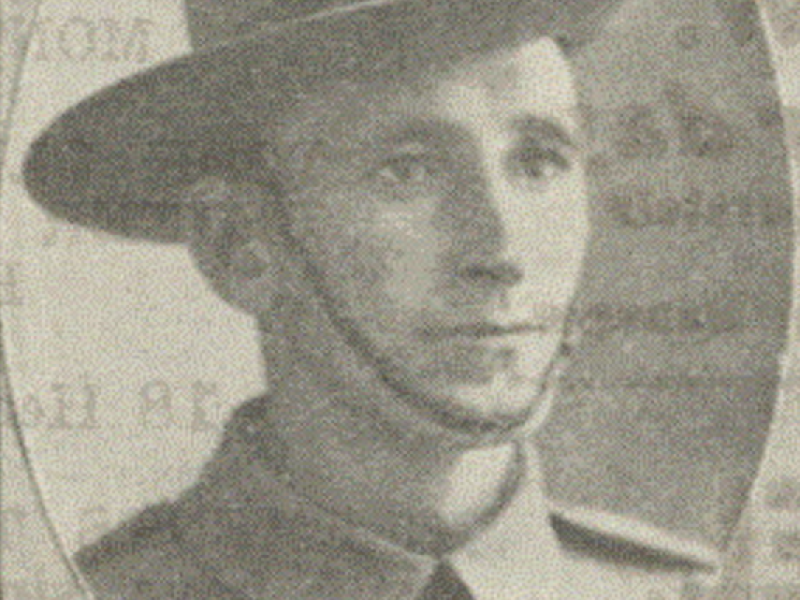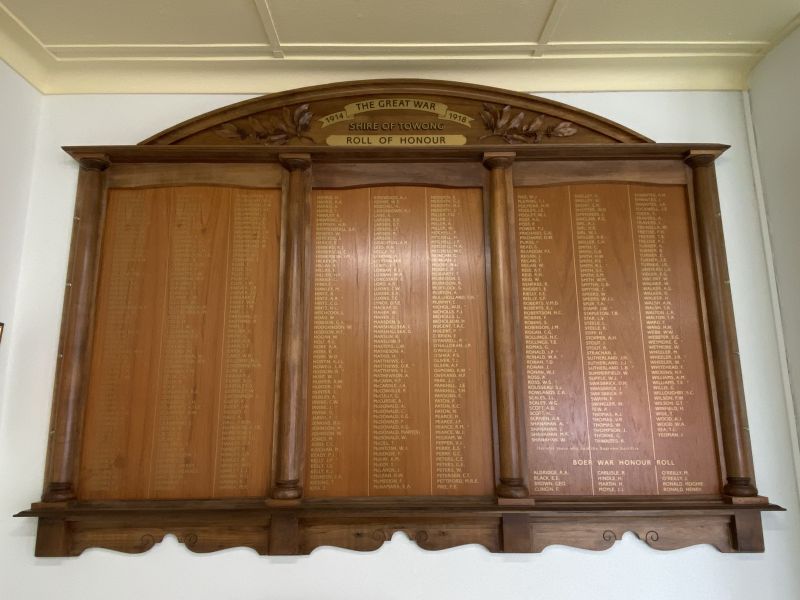James (Jim) Drummond Swasbrick
Jim was born on the 25th of October 1889 at Mitta Mitta in Victoria. He was one of fourteen children to William and Jean Currie (née Drummond). The Swasbricks had taken up land on the Broadribb around 1869. William was also well known as a teamster in the early days hauling wool and travelling to Melbourne for provisions and supplies for the country stores.
Jim left the family farm as it was not large enough for five sons to make a living out of it. He worked around the district as a labourer and horsebreaker for farmers around the area and then moved to Queensland where he became a dam building contractor. By the time Jim decided to enlist in August of 1914, both of his parents had passed away, Jean in 1908 and William in 1913.
Jim enlisted at Enoggera, Queensland being allocated the very low Regimental Number of 135. It was the 24th of August, three weeks after war had been declared. He stated that had three years experience with the 4th Artillery Battery back in Albury. He was initially taken on strength with the 4th Light Horse Train. On the 24th of September, 1914, he embarked on HMAT A5 Omrah at Brisbane.
There are a number of gaps in Jim’s service records. It’s known that he spent a week in the field hospital in Cairo in May of 1915, although the cause of his stay is not stated. On the 19th of August of that year he was taken on strength with the Mediterranean Expeditionary Forces from the 5th Australian Service Corps. On the last day of January 1916 he was arrested in Cairo for disobeying and order. For this he was awarded two days confined to barracks and ordered to do one extra piquet (patrolling the camp at night). During February, March and half of April, 1916, Jim was on detachment at the Ghezirah Red Cross Hospital in Cairo. On the 11th of April, 1916, Jim was transferred to the Anzac Patrol Corp based in Sohag, Egypt.
In late May, Jim embarked on HMT Corsican at Alexandria and proceeded to join the 1st Training Battalion in England. After undergoing training in England he arrived at the 1st Australian Division Base Depot at Etaples in France and was taken on strength with the 13th Infantry Battalion on the 20th of October, 1916.
Following their heavy losses during the Somme Campaign in 1916, the Germans made a deliberate withdrawal to a shorter line to their rear. Which they named the Hindenburg Line. In response to this Allied forces began to rapidly advance. During late March and early April Australian troops found themselves up against a strong rearguard which the Germans had left behind in strong outposts villages. Two brigades of the 4th Australian Division, the 4th and the 12th, were entrusted with the capture of a strongpoint at the village of Bullecourt.
The attack was to take place on the morning of the 11th of April, commencing at 0430 hours. The 13th Battalion left their trenches at 0445 hours with A and Companies moving out first, followed by B and D Companies at a distance of 200 yards. As soon as they left the shelter of a railway cutting they began taking losses from shell fire. When about 600 yards from the first objective the battalion came under intense machine gun fire. This became more intense as they reached the first line of wire. A dozen British tanks slowly moved across no-mans land to support the infantry but by 0700 hours all were burning wrecks, with only four having reached the enemy wire.
Eventually the Australians found themselves inside the Hindenburg Line but were fighting without artillery support and were cut off from reinforcements. Whilst they managed to stop a number of German counter attacks, the strength of the German forces and the lack of support resulted in the Australian troops having to withdrawal. Approximately 660 men out of the original 3000 members of the 4th Brigade (of which the 13th Battalion was part of) remained alive or uninjured. Almost 1170 soldiers from the 4th and 12th Brigade were taken prisoner of war by the Germans - the largest number of Australians captured in a single battle. Jim was listed as missing in action on the 11th of April. On the 25th of August this was changed to killed in action.
Jim has no known grave. He is remembered on the Australian War Memorial Roll of Honour, the Villers-Bretonneux Memorial (Australian National Memorial), the Eskdale Honour Roll, and the Boer War and WW1 Roll of Honour at Tallangatta, Victoria. For his service he was awarded the 1914-15 Star, the British War Medal and the Victory Medal.

 Stephen Learmonth
Stephen Learmonth